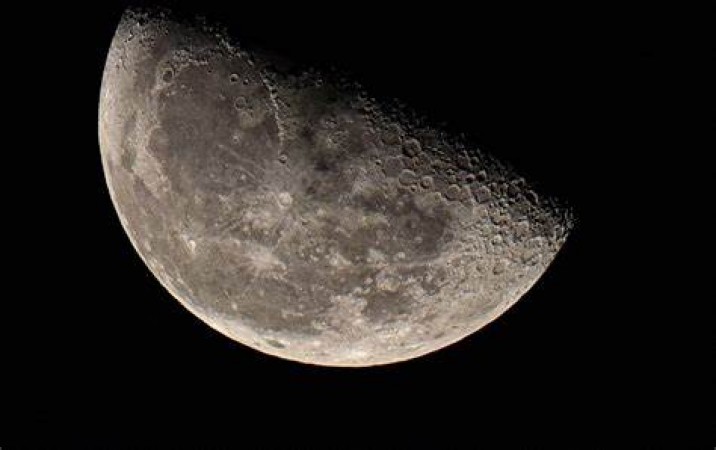
The Lunar Surface's Wild Temperature Swings
The Moon, our celestial neighbor, presents a rather astonishing climate scenario. Unlike our Earth, it lacks the protective embrace of an atmosphere. Consequently, the lunar surface experiences temperature extremes that would put even the hardiest of thermometers to the test. By day, the lunar landscape bakes under the unrelenting glare of the Sun, with temperatures soaring to a blistering 120 degrees Celsius. However, as the lunar night descends, the mercury plunges dramatically to a mind-numbing -130 degrees Celsius. This dramatic daily temperature shift is a unique characteristic of the Moon and plays a pivotal role in the seismic events that have recently captured the attention of scientists.
Cracking the Lunar Mystery
In the quest to unravel the mysteries of our celestial companion, scientists have stumbled upon a captivating phenomenon – thermal moonquakes. These are not your typical Earth-shaking seismic events but rather subtle tremors and surface cracks that occur as a result of the Moon's peculiar thermal behavior. The lunar surface, devoid of an atmosphere to regulate its temperature, undergoes a daily routine of expansion and contraction, directly influenced by the extreme temperature variations. This rhythmic expansion and contraction lead to the minor shaking and cracking known as thermal moonquakes.
Decades-Old Data Gets a Modern Makeover
To delve deeper into this lunar enigma, researchers turned to a treasure trove of historical data left behind by the Apollo 17 mission, which graced the lunar surface in the 1970s. These seismometers, carefully placed on the Moon's rugged terrain, collected invaluable data that had remained largely untouched for decades. However, modern scientific techniques, including the formidable power of machine learning, were brought to bear on this archival information.
A Rhythmic Lunar Dance
The analysis of this historical data revealed a captivating and surprisingly rhythmic pattern in the occurrence of thermal moonquakes. These lunar tremors exhibit remarkable regularity, choreographed to perfection with the lunar afternoon. As the Sun gradually relinquishes its peak position in the sky, the lunar surface, having basked in the daytime heat, begins its gradual cooldown. It is during this transition that thermal moonquakes make their entrancing appearance.
Surprising Discoveries in the AM
As researchers delved even deeper into the lunar data, they made an intriguing discovery. The morning hours on the Moon, it turns out, are not as serene as one might imagine. While distinct from the evening moonquakes, these morning vibrations stirred the curiosity of scientists. After meticulous investigation, these quakes were attributed not to thermal activity but to the Apollo 17 lunar lander base itself. As the lunar morning sun cast its warming glow on the lander, the structure expanded, producing distinct creaking vibrations. What's truly astonishing is the regularity of these lunar morning performances, occurring every five to six minutes over a period of five to seven Earth hours.
Astronauts Return to the Moon
As humanity sets its sights on the Moon once again, with the ambitious Artemis missions on the horizon, the newfound understanding of lunar thermal dynamics takes on paramount importance. With plans to send astronauts back to the lunar surface and establish a permanent lunar base, it is imperative to design equipment and structures that can withstand the extreme temperature fluctuations and the resulting moonquakes. This knowledge will be instrumental in ensuring the success and safety of these upcoming missions.
Seismic Waves and Lunar Insights
Beyond the surface-level fascination, the seismic waves generated by these moonquakes offer scientists a unique opportunity to probe the lunar interior. Researchers are hopeful that this seismic data will enable them to map out the subsurface cratering patterns and perhaps even detect the presence of water ice hidden in the perpetually shadowed regions near the Moon's South Pole. Such discoveries could hold significant implications for future lunar exploration and potential resource utilization.
Probing the Moon's Internal Structure
Despite the Moon's apparent tranquility, the absence of plate tectonics or volcanic activity, and its close proximity to Earth, many questions persist regarding its internal structure and geological history. The recent revelations about thermal moonquakes represent a significant stride towards unraveling these lunar mysteries. As humanity continues to cast its gaze towards the Moon and beyond, each discovery brings us closer to comprehending the enigmatic world that orbits our home planet.
The Moon, often thought of as a quiet and desolate neighbor in the cosmos, has surprised us with its hidden vibrancy. The regular dance of thermal moonquakes and the intriguing morning creaks of the Apollo 17 lander base remind us that even the most seemingly serene places in our universe have their own tales to tell. As we prepare for a return to the lunar surface, armed with newfound knowledge, we are better equipped to embrace the lunar mysteries that await us.
Beneath the Waves: Unveiling the Secrets of Submarine Operations
Comprehensive Guide to Dental Care: Tips for Healthy Teeth
Building a Career in Animal Care: A Comprehensive Guide for Students